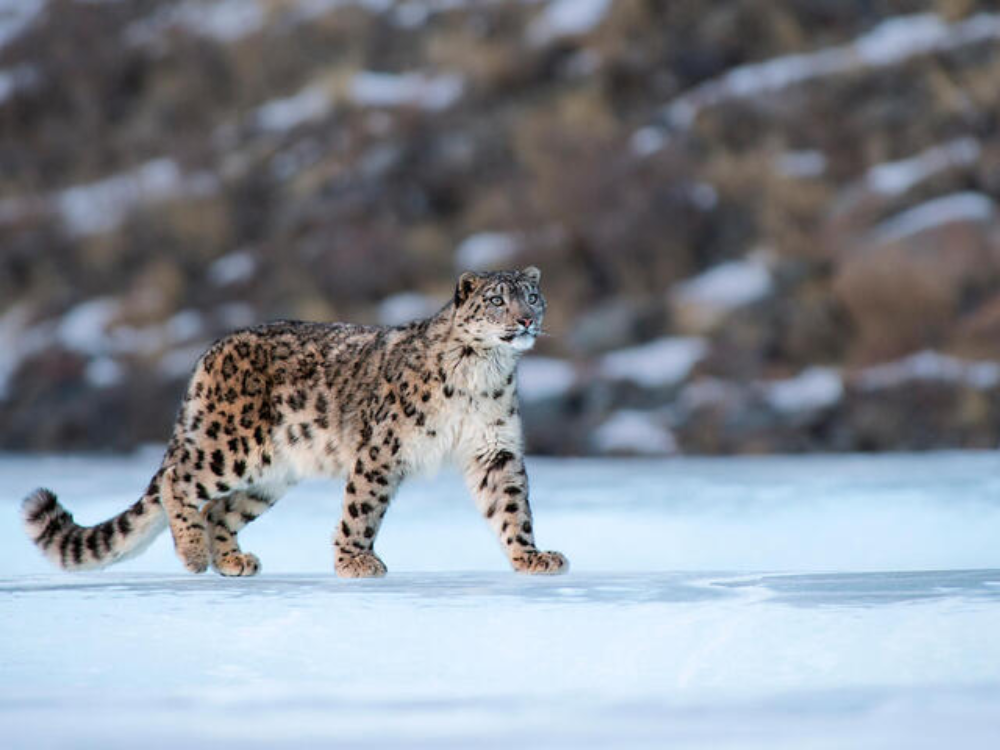In the remote and rugged mountains of Central and South Asia resides one of the most elusive and majestic creatures on Earth – the snow leopard (*Panthera uncia*). With its mesmerizingly beautiful coat, stealthy movements, and mysterious presence, the snow leopard has captivated the imagination of humans for centuries. Yet, despite its cultural significance and ecological importance, this enigmatic big cat remains shrouded in mystery, its habits and habitats largely hidden from the world. Join us on a journey into the heart of snow leopard territory as we unravel the secrets of this elusive feline.
Distribution and Habitat
The snow leopard’s range spans across 12 countries, including Afghanistan, Bhutan, China, India, Kazakhstan, Kyrgyzstan, Mongolia, Nepal, Pakistan, Russia, Tajikistan, and Uzbekistan. Within these vast and inhospitable landscapes, snow leopards carve out a niche in high-altitude habitats, typically above 3,000 meters (9,800 feet). They are supremely adapted to the harsh conditions of their mountainous homes, with thick fur, large nasal cavities that warm the frigid air before it reaches their lungs, and wide, fur-covered feet that act as natural snowshoes.

Physical Characteristics
Snow leopards are strikingly beautiful animals, with a thick, fur-covered tail that can be as long as their body, providing balance and insulation in the cold. Their fur has unique patterns with rosettes and spots, providing excellent camouflage amidst the rocky terrain. These cats have powerful hind limbs, enabling them to leap distances of up to 15 meters (50 feet) in pursuit of prey. Their long, muscular bodies and short, powerful limbs are for navigating steep slopes and rocky terrain with grace and agility.
Behavior and Ecology
As solitary and elusive predators, snow leopards lead largely solitary lives, with minimal social interaction except during the breeding season. They are primarily crepuscular and nocturnal, hunting under the cover of darkness to avoid detection by their prey. Their diet consists mainly of wild sheep and goats, as well as smaller mammals like marmots and pikas. Despite their size and strength, snow leopards are remarkably elusive, with sightings often fleeting and rare.
Conservation Status
The snow leopard faces a myriad of threats, including habitat loss, poaching, and retaliatory killings by herders protecting their livestock. Climate change poses an additional challenge, as rising temperatures threaten to shrink the snow leopard’s already limited habitat and disrupt its prey base. Conservation efforts are underway to protect this iconic species, including the establishment of protected areas, community-based conservation initiatives, and efforts to reduce human-wildlife conflict through innovative solutions such as predator-proof corrals.
Conclusion
The embodies the wild and untamed spirit of the mountains, a symbol of resilience and adaptability in the face of adversity. As we strive to conserve this magnificent creature and its fragile mountain habitats, we are reminded of the interconnectedness of all life on Earth and the importance of preserving biodiversity for future generations. In the snowy peaks and rocky crags where the snow leopard roams, we find not only a glimpse of wild beauty but also a call to action to protect the natural world that sustains us all.









